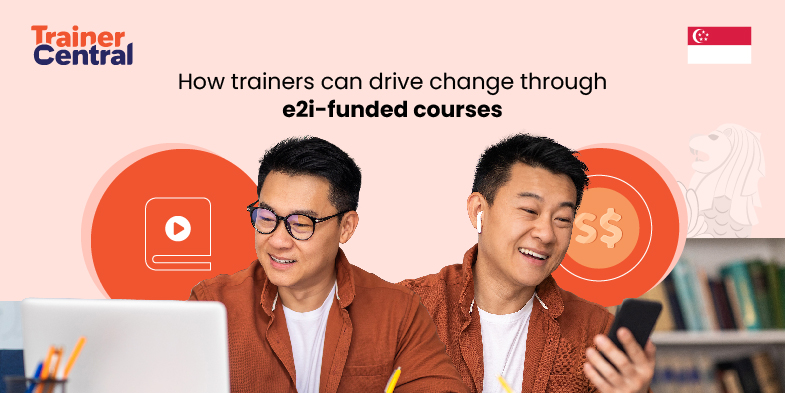- HOME
- E-Learning trends
- Choosing the optimal length for an online course
Choosing the optimal length for an online course
- Last Updated : August 9, 2024
- 871 Views
- 5 Min Read

The internet offers unprecedented flexibility for learning new skills through online courses, making them a vital catalyst for personal and professional development. However, determining the optimal length of an online course is crucial for its success.
While some might argue that long-duration courses provide depth, others prefer shorter courses for better engagement. Striking the right balance can boost enrollment, enhance student engagement, and ensure effective learning.
In this blog post, we’ll explore the ideal length for an online course and provide insights on determining the perfect duration for your courses.
Why the length of a course is important
The length of an online course is a crucial factor that decides the effectiveness of an online course. It directly impacts learner retention, completion rate, and overall success of the course. An ideal course with the right duration makes it more enjoyable and effective, and it can also be informative and appealing to a wide range of learners.

Student engagement
Course length plays an important role in maintaining student engagement. Micro lessons with short durations help keep students’ attention and focus intact. This also prevents burnout and keeps boredom at bay. A student’s attention span is approximately 15 to 20 minutes, so breaking your course down into smaller chunks can significantly improve their engagement.
Course completion rate
Higher course completion rates are often linked to shorter and well-structured courses. Learners are more likely to complete a course that is designed with shorter, clearer, and more achievable milestones. Courses that offer content in digestible segments tend to see better completion rates.
Learning effectiveness
Effective learning strikes a delicate balance between comprehensive coverage and brevity. A course that is too short may lack the depth needed to explore key concepts fully, while one that is excessively long can overwhelm learners with too much information. Finding the optimal course length ensures that students grasp essential ideas without feeling inundated, enhancing both their understanding and retention. By carefully tailoring the course duration, educators can create a more engaging and effective learning experience that maintains learner interest and promotes better outcomes.
Factors influencing the ideal course length
There are several key factors that contribute to the length of an online course. By considering the right elements, educators can design courses that not only meet their educational goals but keep learners motivated and committed throughout their learning journey.
Target audience
Understanding your target audience is crucial for determining course length. For instance, working professionals may prefer shorter modules that fit into their busy schedules, whereas full-time students might be able to commit to longer, more detailed sessions. Tailoring your course length to the lifestyle and preferences of your audience can enhance its effectiveness.
Subject matter
The complexity of the subject matter directly impacts the necessary course length. Technical subjects such as programming or engineering often require longer, more detailed courses to cover all essential aspects. In contrast, courses on general topics can be effectively delivered in shorter formats.
Course goals
The objective of your course plays a vital role in determining its length. If the goal is to provide an in-depth understanding or certification, a longer, more detailed course is required. However, if the objective is to provide a quick skill update or a refresher, shorter courses are more appropriate.
Industry standards for optimal online course length
Understanding industry standards can provide valuable insights into determining the ideal length for online courses. By examining established practices and benchmarks from the industry, you can gain valuable insights. These industry insights can guide the design of online courses to enhance learner engagement and success.
Benchmarking
Industry benchmarks provide valuable insights into optimal course lengths. For example, Coursera courses typically range from four to six weeks, with weekly commitments of three to four hours.
Case studies
Analyzing successful courses can provide practical benchmarks. For instance, LinkedIn Learning offers many courses that are less than three hours in total length, designed to fit into professionals’ busy schedules. Such examples highlight the importance of concise and targeted content.
Surveys and reports
Various surveys and reports offer data on ideal course lengths. Massive open online courses can range from one to 16 weeks long. Some research also suggests that an ideal length of an online course is seven to eight weeks. That allows the learners to spend enough time to interact with their course material and lower the drop-out rate.
Types of online courses and their ideal lengths
Microlearning modules
Microlearning involves creating courses and lessons in a micro format. These are short duration lessons that can be completed in five to 10 minutes. This format promotes effective learning for those who have limited time to fit the learning into their daily routine. It improves knowledge retention and increases learner engagement in online courses.
Comprehensive courses
Complex subjects that require extensive in-depth teaching are suitable for comprehensive courses. These courses span several weeks or months for completion depending on the complexity and subject. These types of courses allow for a thorough understanding and mastery of the subject, making them ideal for academic and professional development.
Certification programs
Certification programs often require a significant time investment, typically ranging from 20 to 40 hours. These courses need to cover all of the necessary material comprehensively to ensure learners are fully prepared for certification exams.
Workshops and webinars
Workshops and webinars are generally shorter, interactive sessions that range from a few hours to a full day. These formats are excellent for hands-on learning and immediate feedback, making them suitable for practical skills training.
Tips for determining the right length for your course
Break down content
Segment your course content into manageable modules. Each module should cover a specific topic or skill, making it easier for learners to absorb and retain information. This approach also allows learners to progress at their own pace.
Student feedback
Regularly gather feedback from your students to understand their preferences and challenges regarding course length. Use surveys, questionnaires, and direct feedback to make informed adjustments to your course structure.
Pilot testing
Conduct a pilot test of your course with a small group of learners. Use their feedback to refine the course length and structure. Pilot testing helps identify potential issues and areas for improvement before the full launch.
Iterative approach
Adopt an iterative approach to course development. Regularly update and adjust your course based on performance data and student feedback. This ongoing process ensures that your course remains relevant and effective over time.
Conclusion
Determining the ideal length for an online course involves understanding your audience, subject matter, and course goals. It also maximizes the impact of your online courses. By balancing these factors, you can create a course that is engaging, effective, and meets the needs of your learners. Ultimately, finding the right duration is a key to deliver a successful and rewarding learning experience.


